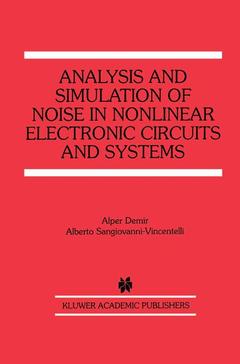In electronic circuit and system design, the word noise is used to refer to any undesired excitation on the system. In other contexts, noise is also used to refer to signals or excitations which exhibit chaotic or random behavior. The source of noise can be either internal or external to the system. For instance, the thermal and shot noise generated within integrated circuit devices are in ternal noise sources, and the noise picked up from the environment through electromagnetic interference is an external one. Electromagnetic interference can also occur between different components of the same system. In integrated circuits (Ies), signals in one part of the system can propagate to the other parts of the same system through electromagnetic coupling, power supply lines and the Ie substrate. For instance, in a mixed-signal Ie, the switching activity in the digital parts of the circuit can adversely affect the performance of the analog section of the circuit by traveling through the power supply lines and the substrate. Prediction of the effect of these noise sources on the performance of an electronic system is called noise analysis or noise simulation. A methodology for the noise analysis or simulation of an electronic system usually has the following four components: 2 NOISE IN NONLINEAR ELECTRONIC CIRCUITS ? Mathematical representations or models for the noise sources. ? Mathematical model or representation for the system that is under the in fluence of the noise sources.



